From dazzling churches to relics of ancient civilizations, Peru has more than its fair share of striking natural landmarks and historic monuments.
Although there are certainly a few well-known spots in among the others in this list of places to visit in Peru, I’ve added some barely-visited alternatives that promise the same mix of history and spellbinding scenery – just without the crowds.
So read on for my guide to the 24 most spectacular places to visit and things to do in Peru – many of which you’ll probably never have heard of before.
My Absolute Favorite Places in Peru
I’ve lived in Cusco, traveled extensively around the south of Peru and also updated the Rough Guide to Peru, focusing on the north of the country. And, the places that I fell most deeply in love with will probably surprise you.
So, in no particular order, here are my favorite places in Peru, followed by a list of others that you might want to consider adding to your travel itinerary if you’ve got a little more time.
1. Machu Picchu
Easily the most famous place to visit in Peru and the Goliath of South America’s tourism hotspots, the Incan citadel of Machu Picchu perched high up in the Andes has topped many a bucket list. And, there’s a reason why.
Its location is truly dramatic and walking around the site with a local guide learning about exactly what all of the buildings would have been for and why it was constructed high up in the mountains only adds to the magic of the experience.
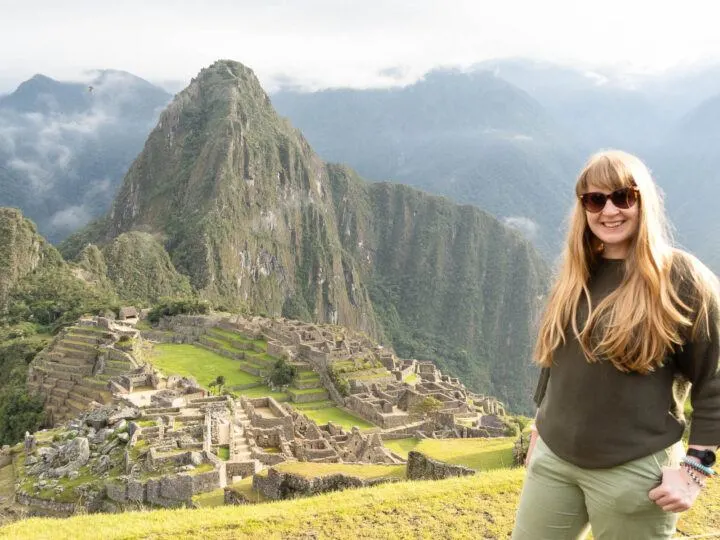
There are several options for getting to Machu Picchu – not all of them expensive – but most pass through Aguas Calientes, the small and nowadays hugely touristy town crouched at the base of the mountains.
A self-guided two-day tour from Cusco via minibus coming in as the cheapest way to get to Machu Picchu.
The Inca trail is the most well-known but by no means the only or best hiking route to get there; other adventurous options include the Salkantay and Lares treks. I personally really enjoyed the Salkantay, as it heads into the mountains beyond Machu Picchu and felt quieter than the Inca Trail.
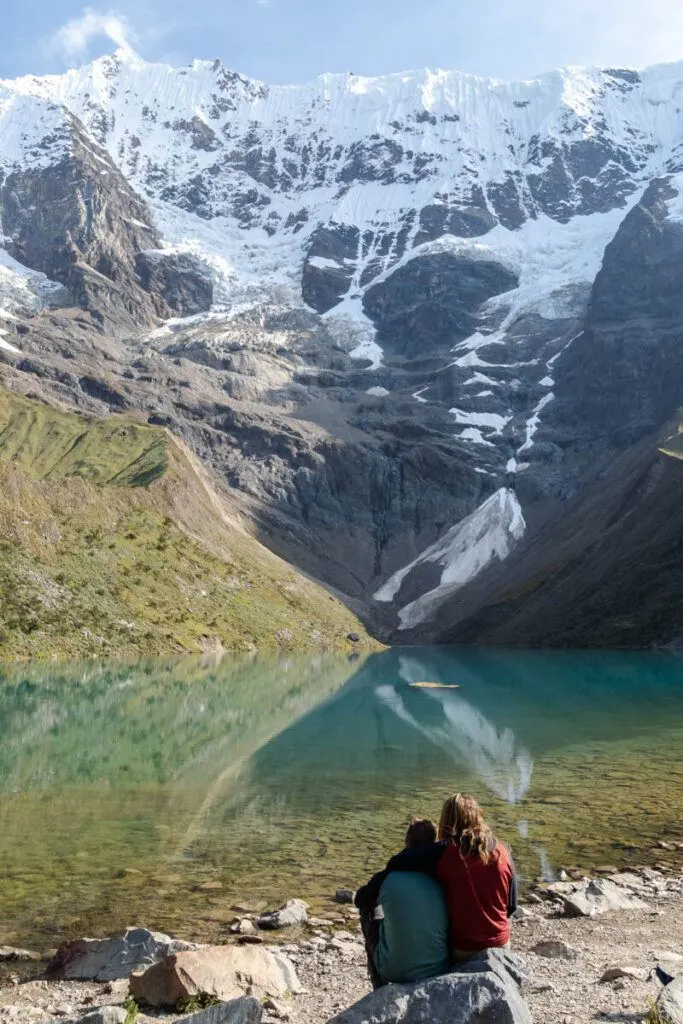
Want a cheeky 5% discount on the Inca trail or Salkantay trek?
Alpaca Expeditions are not only one of the most sustainable companies offering Salkantay and Inca trail treks to Machu Picchu, but their guides, porters and chefs are the ultimate hosts.
They’re now offering Worldly Adventurer readers a 5% discount on all of their hikes – just mention Worldly Adventurer when you enquire!
Before you plan, read up on when you should visit Machu Picchu for the times of the year with the best weather and finest views of the citadel.
2. Gocta and Yumbilla Falls
Plunging a dramatic 771 meters from clifftop to valley floor, Gocta Falls are a treasure of nature tucked deep into Northern Peru and quickly becoming one of the most popular tourist attractions in the country.
Interestingly, tourists have only been visiting Gocta for the past 15 or so years after these falls were revealed to the outside world by a German explorer – although, they obviously had been known to the locals for far longer!
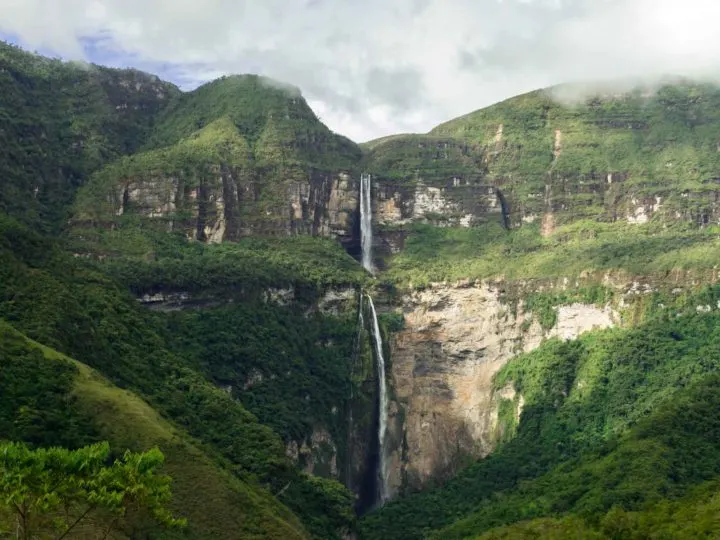
Although the view from nearby Cocachimna is spectacular in itself, the six-hour hike to the forceful spray at their base is definitely worth it – although the route can be particularly muddy.
For even more intrepid, Indiana Jones-types, nearby Yumbilla Falls is similarly dramatic – and receives far less footfall.
At 896 meters, these waterfalls are actually higher than Gocta and it’s a short five kilometers on foot from the trailhead to reach the base of the first section of falls.
3. Kuélap
For treasure seekers, Peru’s long history of developed civilizations doesn’t end with the likes of Machu Picchu and other Inca sites in the south – and explains why I think Peru is one of the best countries in South America to visit for those seeking fascinating archaeological sites.
The jewel in northern Peru’s crown is the archaeological site of Kuélap, a partially-restored citadel installed on a lofty plateau in a mountain above the Uctubamba Valley.
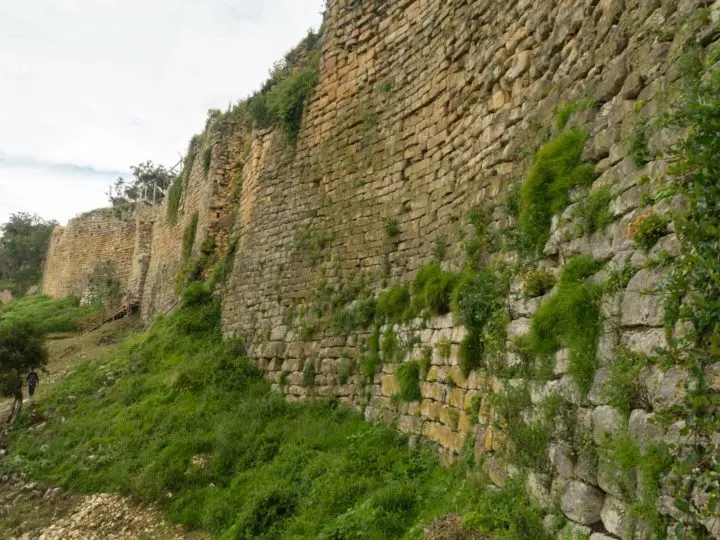
The city’s construction dates remain unknown, but it’s thought to be anywhere up to 1,000 years older than the country’s more famous Inca constructions.
It also boasts enormous 20-meter-high stone walls surrounding what was formerly an extensive city.
Around 500 circular stone houses, many decorated with relief motifs remain. On a tour of the site, you learn about how, at the center of these buildings, a stone cellar would have been used to store the mummies of their dead.
One of the main things to do here is take the new cable car system up to the fortress or you can even arrive how the Chachapoya would have done – with a sweaty and steep four-hour climb from the valley below.
4. Huaraz
Forget the Inca Trail in the south of Peru: the Cordillera Blanca and Parque Nacional Huascarán make Huaraz the country’s hiking and climbing capital.
Jagged, ice-sheathed mountains bow into aquamarine lakes and high-altitude hiking trails climb up between the two, offering truly spectacular scenery and a glimpse of delicate vicuña and soaring condors.
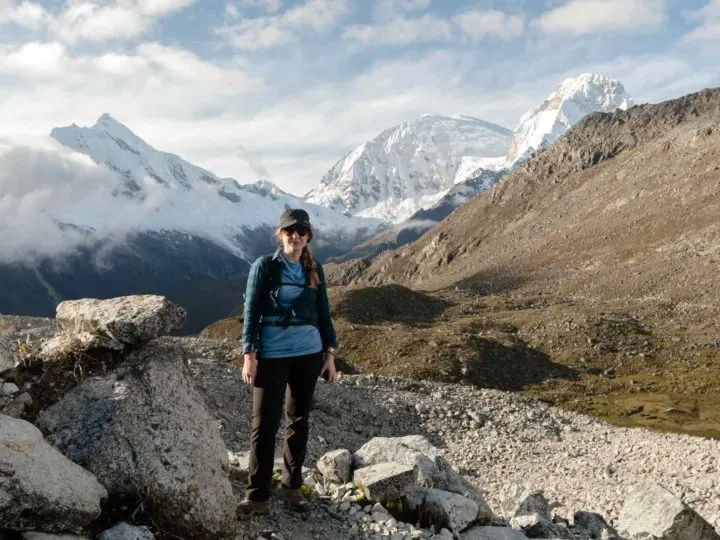
The region’s most popular hikes include the one-day Laguna 69 trail and the four-day Santa Cruz trek, both of which climb into the mountains to reach picturesque – and truly photogenic – glacial lakes.
For more experienced hikers, consider heading south to the far less visited Cordillera Huayhuash, where the 14-day (and 186-kilometer) Huayhuash Trek promises high-altitude passes and stunning mountain scenery.
All can be reached from Huaraz, where comfortable mountain lodges offer lodgings.
5. Lima’s dining scene
Visiting Peru without spending some quality time in its capital would be a damn shame. A chaotic, concrete jungle intertwined with majestic colonial architecture, pre-Colombian remains, and a buzzing cultural scene, Lima is well equipped for a charm offensive.
Eat your way across South America’s gastronomic capital (pisco sours and ceviche are just the beginning…), being sure to venture beyond the sprawling beach and luxury shops and bars of tourist-popular Miraflores to the colonial city center and the hipster hangout of Barranco (craft beer included) to experience the other faces of this charismatic city.
Make sure you stop in for lunchtime ceviche (Peru’s stable dish) at La Mar and enjoy some criolla music at the famed Del Carajo, a peña (a late-night traditional music venue and bar) packed with local Limeños.
And check out our review of Selina for your guide to where to stay in Lima.
6. The Sacred Valley
The fertile valley sprawling outwards from the Urubamba river is famed for its arresting beauty and – for some – its healing energy.
The valley is peppered with wellness retreats offering everything from yoga and meditation to plant healing ceremonies such as the notorious ayahuasca, as well as fascinating Incan ruins and picturesque towns.
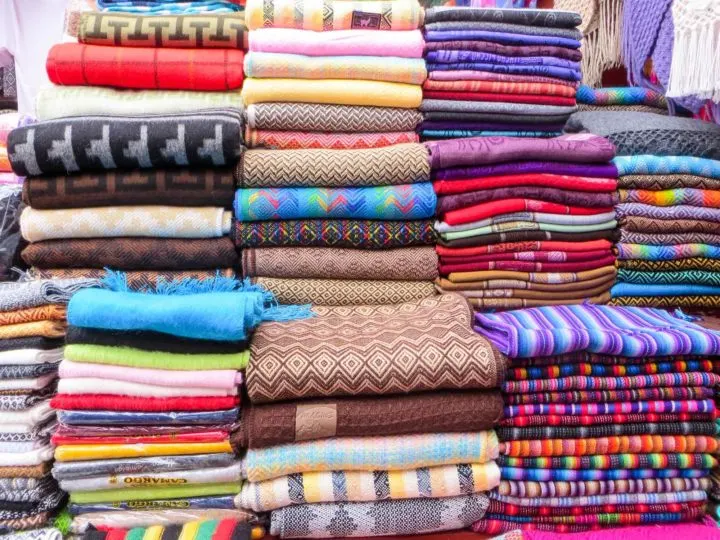
While the town of Ollantaytambo is a key destination on the local tourism circuit (and an interesting place to visit in the Sacred Valley) as it’s the starting point of the Inca Trail, Pisac hosts a great market, really fascinating archeological site from the Inca, and an epic foam fight during the annual Carnival celebrations – which are more interesting than those in nearby Cusco.
You’ll also find plenty of places to stay in the Sacred Valley, which, at a lower altitude than Cusco, is a great place to acclimatize to the high elevations of the region.
I’ve never eaten at Mil, the expensive restaurant run by acclaimed Peruvian chef Virgilio Martínez, but it’s on my list to return- it looks incredible!
7. The Colca Canyon
Twice as deep as the Grand Canyon but not nearly as famous, Cañon del Colca (Colca Canyon) boasts dramatic scenery and pre-Colombian agricultural terraces built into its sheer sides and has quickly established itself as a Peruvian landmark that you don’t want to miss.
It is one of the best places in South America to spot endangered Andean Condors, which can be seen gliding between rocky cliffs in the skies above, most visibly from the Mirador Cruz del Condor.
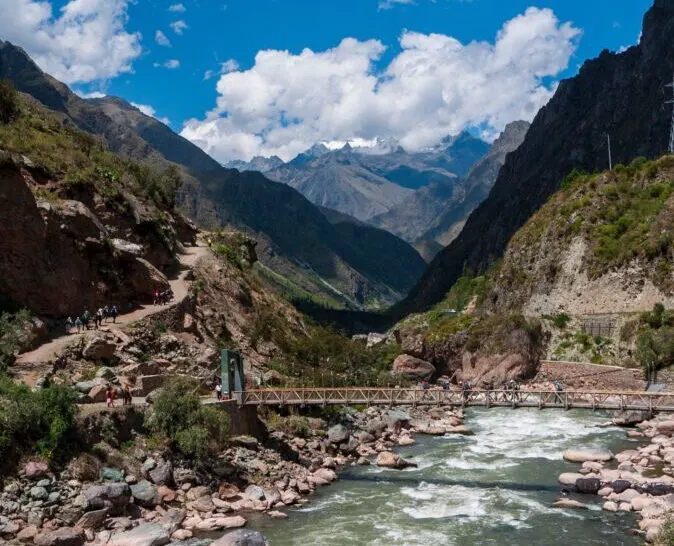
As an entry point to the western side of the canyon, the small town of Cabanaconde may be reached by a 3.5-hour bus journey from Arequipa, and from here, a two-day hike sees you plunge down into the depths of the canyon.
In the evening, take a relaxing dip in the swimming pools of the lush Paraiso Las Palmeras Lodge (S/133 ($40 USD) double) before an early – and lung-busting – climb back out again the next morning.
8. Museo Tumbas Reales de Sipán
All things that glitter aren’t gold – well, that’s what they say, at least. In the Museo Tumbas Reales de Sipán, a museum in the northern town of Lambayeque, you can be guaranteed that practically everything you see is in fact gold.
I remain baffled by the fact that this remarkable museum remains so off the radar for most visitors to Pedru. Dedicated to the Mochica culture, which flourished along the northern Peruvian coast between 100 and 700 AD, this museum is considered one of the finest in South America.
It contains three floors of remarkable gold and silver jewelry, headdresses, and other artifacts that were buried in the tomb of El Señor de Sipán – a Mochicha ruler. A recreation of his tomb is one of the museum’s main exhibits.
You can even visit the original archaeological site located south of Chiclayo, although the museum contains just replicas of the artifacts shown in Lambayeque.
9. Puerto Maldonado and the Tambopata National Reserve
Puerto Maldonado, the small, sweltering city where the Tambopata and Madre de Dios rivers converge, is perhaps the most quickly accessible point of entry to the secluded rainforests of the Amazon basin, particularly for those on a short Peru vacation.
The infrastructure in this part of the Amazon is also far superior to many other entry points, including those in Bolivia and Colombia.
An overnight bus or short plane journey from Cusco brings you to the humid city, before motoring upstream to a jungle lodge.
Stay at the fantastic Tambopata Research Center ($236 USD double), located in the Tambopata National Reserve, for piranha fishing, nocturnal hiking, birdwatching, ayahuasca rituals, and more.
Just a word to the wise: don’t forget your mosquito repellent.
10. Museo Larco, Lima
40,000 ceramics jostle for space on the shelves of the singular Museo Larco in Lima’s Pueblo Libre neighborhood.
If you’re curious about Peru’s history of pottery, there’s no better place, with the exhibits covering a staggering 4,000 years of Peruvian civilization.
But, what the museum is perhaps better known for is its collection of Mochica erotic pottery.
Yup, the Mochica had a penchant for recreating sexual acts through ceramics and you’re guaranteed to spend a few hours chuckling at some of the more explicit pieces.
11. Cusco
Cusco is the centerpiece of Peruvian tourism, both in its own right as the ancient Incan capital and as a pit-stop on the way to the South American tourist’s holy grail, Machu Picchu.
As Peru’s most popular city for tourists, Cusco’s eccentric charm is born from a bizarre fusion of colorful Andean tradition and contemporary intensive tourism. I enjoyed living there for six months back in 2017 – although, getting asked by the guy dressed as an Inca if I wanted to pay for a photo with him every single day did get a little old.
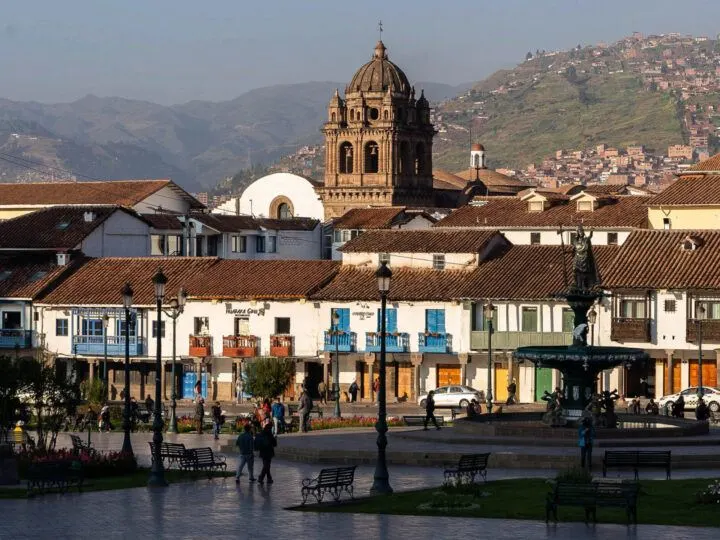
In between gargantuan Incan stone walls, spot brightly adorned, sour-faced llamas, vaguely traumatic stacks of roasted guinea pigs, and local entrepreneurs pushing their wares, from sports massages to (fake) alpaca jumpers.
While it’s hard to find an unexplored inch in the old town, the Baratillo market on a Saturday is an opportunity to escape the throngs of tourists and experience Cusco like a local, while the city’s historic sites – particularly Q’orikancha, an Inca temple overlaid with a 17th-century church – are well worth the visit.
Read my recommended Cusco itineraries for further inspiration.
There are also world-class rapids in the nearby Apurimac and Urubamba rivers (we recommend going white water rafting with local experts and B Corp, Amazonas Explorer – mention Worldly Adventurer for a 5% discount on all of their tours).
12. Trujillo
Peru’s northern capital Trujillo is perhaps the country’s most charming city that you’ve never heard of. A pretty, palm-dotted Plaza de Armas gives on to streets filled with colonial churches and restored old mansions painted in cheerful pastel shades.

But it’s beyond the city’s boundaries where Trujillo’s truly fascinating history lies, in the form of an array of ancient, pre-Inca archaeological sites.
The most famous is the UNESCO World Heritage Chan Chan, the largest adobe city ever discovered on earth, thought to have been home to 60,000 people as part of the Chimú Empire around 850 AD.
Nowadays, you can explore the site, observing the fish and bird motifs on its restored mud walls.
South of Trujillo, the huacas de la Luna and del Sol are two Moche temples, the former of which contains striking relief murals depicting grizzly religious ceremonies; the Moche were known for their use of human sacrifices to appease the gods.
The Complejo Arqueológico El Brujo, a museum showcasing the remains of and treasures buried with a female shaman from the Moche culture is also a must-visit. Her mummified remains show tattoos of spiders, snakes, and marine animals.
It is one of the most interesting museums I’ve ever visited in Peru – and no one seems to know about it!
13. Lobitos
If you’re planning a trip to Peru and seeking sea, sand, and – mostly importantly – surf, few destinations can compete with Lobitos.
Situated 72 kilometers south of the better-known Máncora, Lobitos is Peru’s most up-and-coming surfing destination.
It also offers a welcome escape from the hordes of tourists now covering the beaches of the former.
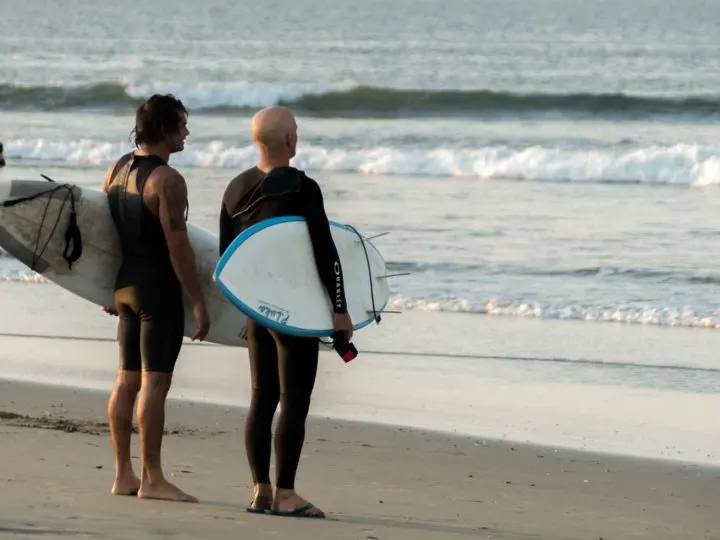
There’s not much to do here other than appreciate the coral-white sands and crystal waters at the beach or rent a board and enjoy consistent swells of up to 7ft, with June the month with the biggest waves.
There are plenty of cozy guesthouses, many, such as the spectacular Buenavista (S/100 ($30 USD) double), that is run by former pro-surfers and offer irresistibly relaxed atmospheres.
If you do want to visit Mancora, which is known for its kite surfing, I much preferred staying outside of the town. Most of the region’s luxury hotels are situated two kilometers south at Las Pocitas, or Punta Sal, the same distance north, where white sand beaches and far fewer crowds point towards a truly affordable paradise.
Try the stunning cabins of KiChic (S/900 ($270 USD) double) or the truly remote bungalows at Yemaya (S/420 ($126 USD) double) – both of which are right on the beach.
13. Lake Titicaca
The colossal Lake Titicaca (Lago Titicaca) – one of the biggest in South America and the highest navigable lake in the world – is a popular stop on a tour of Peru.
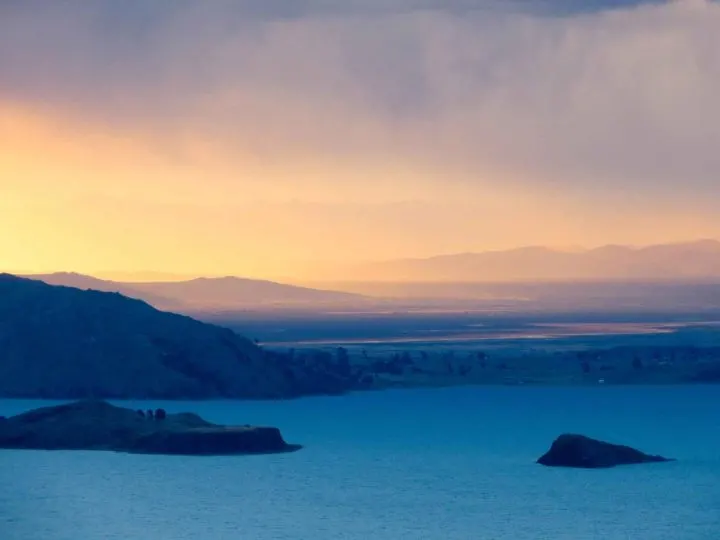
The small city of Puno is gritty to say the least, however, if you’re planning a day trip to the Uros Islands, around 120 remarkable islands hand built from reeds by the Uros people.
When I visited, I found the tours overly touristy and not really how I like to travel – however, since then, it’s possible to stay overnight on the islands and experience what it’s like to sleep on reed furniture on a reed island. This one is very fancy and definitely a less-than-traditional experience; this one is a much more relaxed, local option.
Beyond the Uros Islands, the lake is full of secluded corners to explore ancient ruins, discover local traditions, and take in the fresh air and ruggedly beautiful landscape. A homestay on Amantini island is a great way to experience (non-floating) island life firsthand.
14. The Rainbow Mountains
A relatively new discovery for Peru’s tourism industry, most of the time you only hear about one “rainbow mountain”: Vinicunca.
Day trips from Cusco bus 1,000 tourists here every day armed with smartphones to snap that Instagram-perfect picture of the mountain’s colorful sedimentary stripes (filters abound).
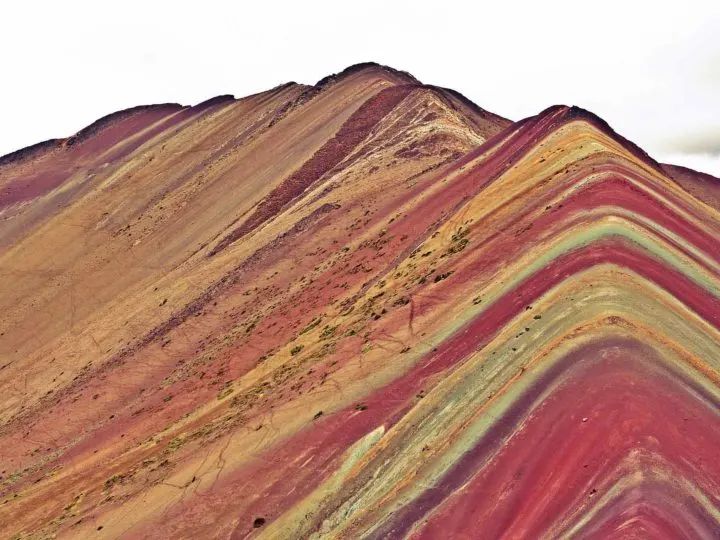
This breakneck baptism into mass tourism has not come without some unpleasant side effects, including poor-quality tours, a rapidly degrading trail, and the destruction of natural habitats.
A one or preferably two-day trip to Palccoyo, the “other rainbow mountain”, offers a more sustainable – and enjoyable – experience. Again, Amazonas Explorers are a brilliant responsible operator with whom to do this trip (and will give you a 5% discount if you mention Worldly Adventurer when enquiring).
Planning Your Trip to Peru?
Save time, stress & money with a customized travel itinerary planned for you by a Peru expert
Got a longer trip? Consider these places too
15. Choquequirao
If you don’t want to share your Incan experience with 2,500 other tourists, skip Machu Picchu and head off the radar to Choquequirao – Peru’s least-known mountain-top fortress.
Although it was once a magnificent site thought to be around the same size as Machu Picchu, only 30% of the site has yet been excavated and it’s distinguished by its huge terraces decorated with white-stone llamas.
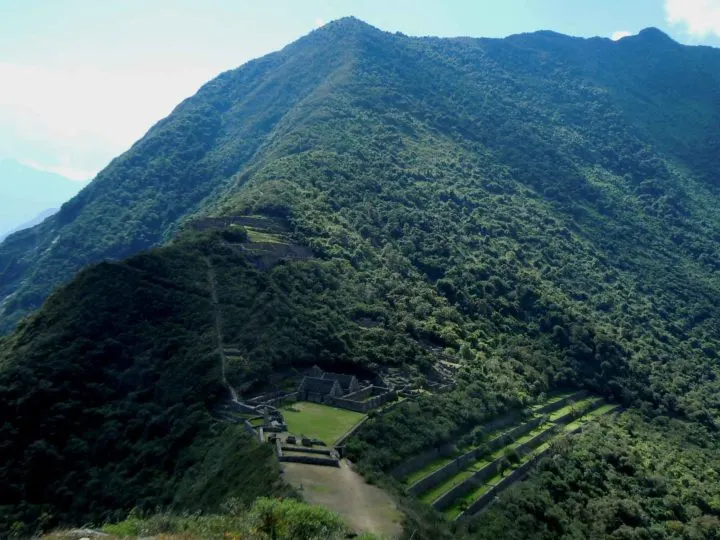
Getting here is a tough but magnificent four-day round trek that sets out from the town of Cachora, but the infrastructure is currently being constructed to make Choquequirao more easily accessible – so if you want to have this place to yourself, get there ASAP.
It’s fair to say that it’s one of South America’s best – and most unmissable – hikes. To do it, we recommend Amazonas Explorers, who have scheduled departures on the first Sunday of each month.
They aren’t the cheapest company available, but they offer a really high level of service, a committed to sustainability as a B-Corp, and have English-speaking guides. Mention us for a 5% discount on their tours.
16. The Nazca Lines
The UNESCO-World-Heritage-Site Nazca Lines trail Machu Picchu for the title of Peru’s most iconic tourist attraction.
To get an eyeful of these baffling, gigantic, ancient geoglyphs etched into the floor of the Nazca desert, first reach Nazca – a 7-hour bus journey from Lima – then arrange your viewing method of choice (options include from viewing tower, nearby mountains, or plane).
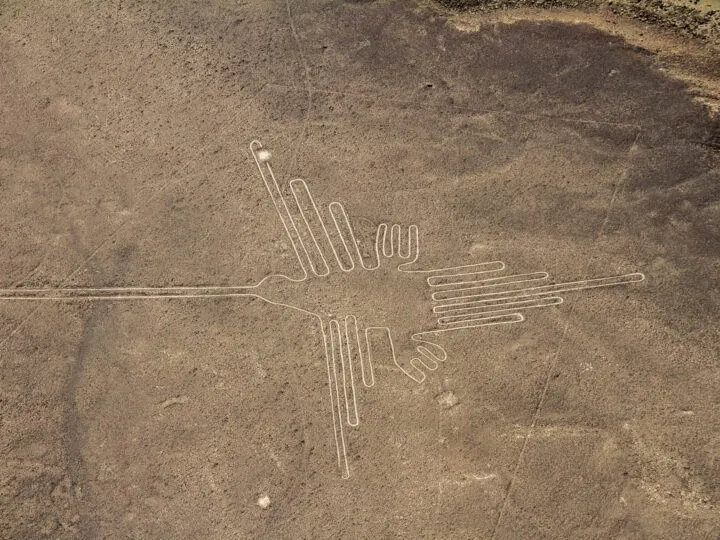
I enjoyed the Nazca Lines, but it’s out of the way of many of the country’s other sights, meaning a lengthy detour on your trip, plus the flights (definitely the only way to really see the geoglyphs properly) can be expensive.
17. Manu National Park
This UNESCO World Heritage Site is an area of globally unrivaled biodiversity, uniquely located at the meeting point of the tropical Andes and the Peruvian Amazon basin.
Reachable from Cusco by plane or a lengthy (over 17 hours) but incredibly scenic route via road and boat, or from Puerto Maldonado (4-6 hours by boat), entrance to the park is only permitted through an established tour operator.
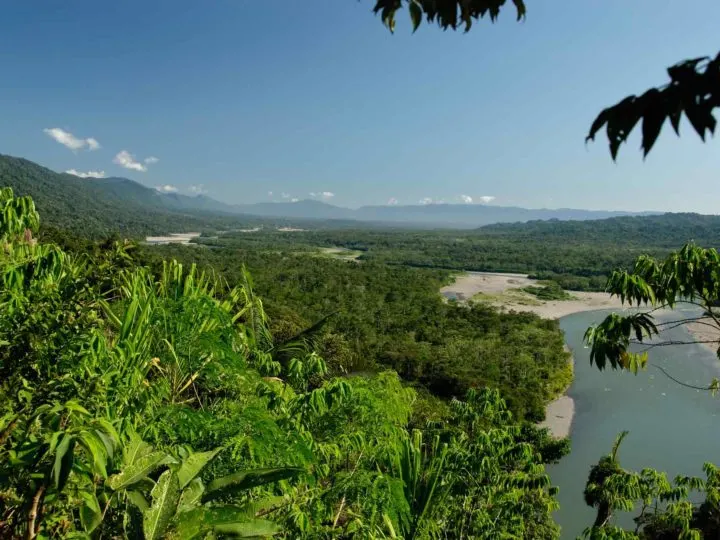
Visitors are in with a chance of spotting elusive big cats and rare species including the giant armadillo and the giant river otter.
18. Arequipa
Signature white buildings set against a skyline dominated by the deceptively serene-looking Misti volcano make Arequipa Peru’s picturesque urban gem.
The country’s second biggest city, though just a tenth the size of sprawling, chaotic Lima, Arequipa holds its own in terms of heritage, culture, and – importantly – cuisine: pop into a local picantería to sample regional favorites such as chupe de camarones and rocoto relleno.
Adrenaline seekers can also hike to the top of one of Peru’s most easily accessible summits, that of Volcano Misti, which sits right behind the city. The hike takes roughly two days to check out the sizzling crater and enjoy stunning views over Arequipa and the Laguna de Salinas.
Find out other things to do in Arequipa in our extensive travel guide to the city and pick your accommodation with this article about where to stay in Arequipa.
19. Leymebamba
On a trip to Peru, you soon learn that there’s one thing you can expect to see in practically all museums you visit: mummies. And for the oddest collection, the Museo de Leymebamba is the winner.
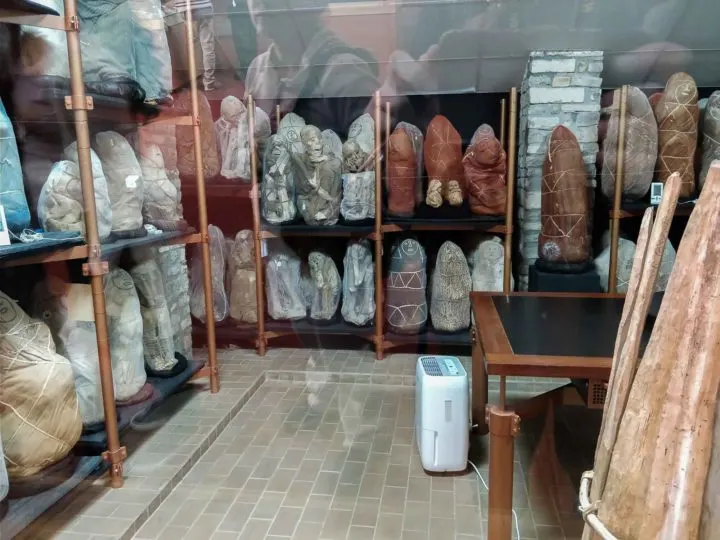
This pretty village just 80 kilometers south of Chachapoyas is home to a troop of 219 mummies – buried by the Chachapoyas people some 800 years ago.
Although most remain wrapped in their original textile coverings, others are bare and seem to make eye contact with you through the (secured!) glass window.
The museum has a range of other artifacts, spanning the Chachapoya and later the Inca.
What’s more, you can still visit the site where the remarkable collection of mummies was discovered. Laguna de los Cóndores is a 38-kilometer hike from the town and the clifftop tombs where the mummies were originally interred are still visible.
20. Chavín de Huantar
Built sometime around 900 BC, the UNESCO world heritage Chavín de Huantar is a spectacular temple complex pertaining to the Chavín cult, which once housed around 3,000 priests at its peak in 300 BC.
This cult was established around the worship of a fanged, feline deity and its followers were enthusiastic takers of hallucinogenic drugs, namely the San Pedro cactus.
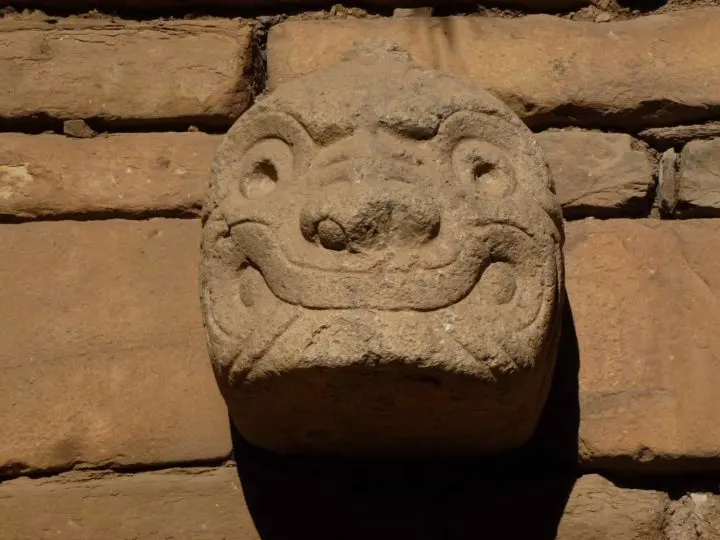
Many of the relief carvings still dotted around this vast archaeological site depict drug-inspired beings. However, to see the Tello Obelisk and Estela de Raimondi, pillars of polished granite with intricate carvings demonstrating the Chavín cult’s exceptional craftsmanship, you’ll have to head to the Museo Nacional de Arqueología, Antropología e Historia del Peru in Lima.
Although some parts of the ruins are in a poor state due to earthquake and flood damage, Chavín de Huantar is one of the country’s finest – and most important – sites.
It certainly merits the bumpy and terrifying at times four-hour bus journey from Huaraz – which also offers dramatic views of the Callejón de Conchucos.
21. Paracas National Reserve
A four-hour bus journey from Lima brings you to Paracas, one of the largest desert reserves in South America and which also encompasses coast and ocean, making it the perfect place to escape the chaos of the metropolis.
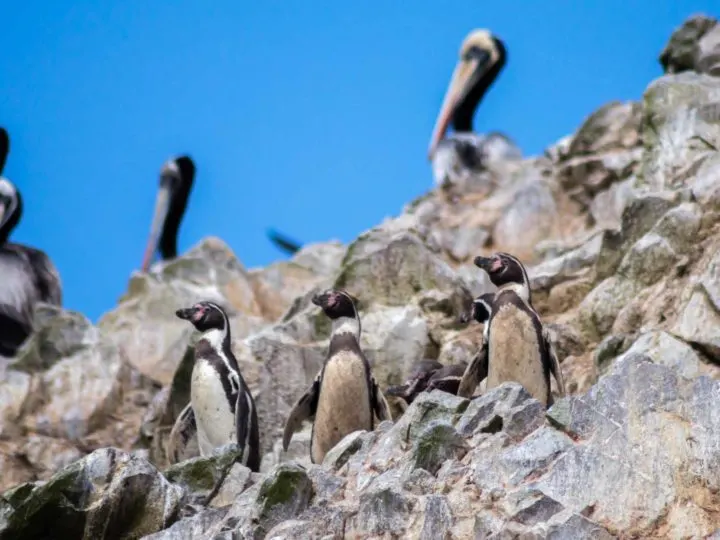
Explore hidden coves with turquoise waters and relax on the red-hued sandy beach of Playa Roja or keep your eyes peeled for abundant bird life, including pelicans and even flamingos on the northern coast of the reserve.
Just outside the reserve, boat excursions take you to the Islas Ballestas to spot Humbolt penguins, sea lions, humpback whales, and many other species.
It’s well-known as the “poor man’s Galapagos” and while it does offer a good opportunity to spot lots of wildlife, it’s a bit of a distance from Peru’s main sights and doesn’t warrant visiting unless you really want to see penguins.
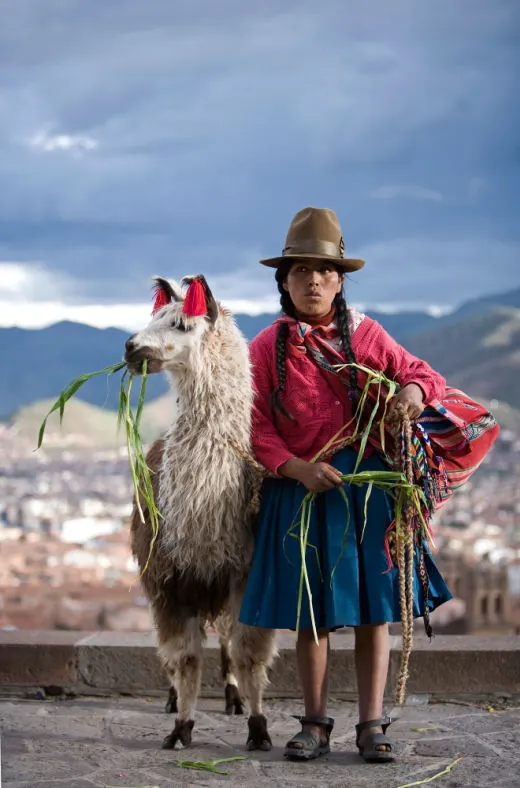
Need help planning your trip to Peru?
My custom-designed itinerary planning service is all you need to plan a trip of a lifetime to one of South America’s most beguiling locations. Check out my Peru trip planning service for more information about how it works.
Alternatively, if you’re looking to book your trip to Peru through a local operator, check out this 15-day Best of Magical Peru tour from our trusted partner in Peru, Valencia Travel.
Hitting the country’s absolute highlights, this incredible tour will take you to unmissable Peruvian destinations including Machu Picchu, The Sacred Valley, Arequipa, Puno, and the Amazon Jungle.
22. Cajamarca
Cajamarca is one of northern Peru’s finest cities to visit. It found its place in Peruvian history as the city where the Inca Emperor Atahualpa was captured and killed by Spanish conquistador Francisco Pizarro and his forces.
Nowadays, this photogenic colonial city is jam-packed full of tourist attractions.
Head to its wide, landscaped Plaza de Armas to admire several elaborately carved Plateresque Baroque churches before continuing onto the final surviving Inca relic, a small, stone room where – legend has it – the ransom to free Atahualpa was stored.
Thousands of gold artifacts were brought here, purportedly reaching up to the line still visible on the aged walls.
Although most traces of the Inca have long since disappeared, you can still bathe like Inca royalty in the nearby Baños del Inca, a site containing pre-Inca thermal pools for a relaxing plunge.
Back in the city, the private collection at the Casa Museo Nicolás Puga takes you far further back into Peru’s pre-Hispanic times with its spellbinding array of Nazca, Paracas, Mochica, and Chavín stone artifacts and textiles.
Finally, a range of peñas (a classic Peruvian bar filled with liquor and criollo beats) brings you right up to modern-day Peru.
23. Caral
If you thought you knew anything about Peru’s ancient civilizations, then think again. Situated just inland in the Supe Valley, a three-hour bus journey north of Lima, Caral is the oldest city in the Americas.
Dating back to around 5,000 years old, it’s thought that construction started here around the same time as the Great Pyramid of Giza – although archaeological work didn’t begin until 1996.
The Caral culture was officially the oldest civilization ever uncovered in the Americas.
Since then, six stone pyramids, many with a ceremonial purpose, and another 14 other buildings have been uncovered – with most of the site remarkably preserved for its age.
It’s easiest to visit with a tour from Lima, although public transport to Supe and then onward to Caral is also possible.
24. Santuario de la Virgen del Rosario de Polloc
You probably wouldn’t think to stop at the tiny rural village of Polloc, a forty-minute bus journey on the road out of Cajamarca towards Chachapoyas. But trust me – you should.
Tucked away from the main road, the murals adorning the Santuario de la Virgen del Rosario glint in the sunshine, which reflects off the thousands of small ceramic and glass tiles that wrap its external walls.
This tiny, colorful church definitely ranks among the most spectacular things to see in Peru – and one of the most hidden.
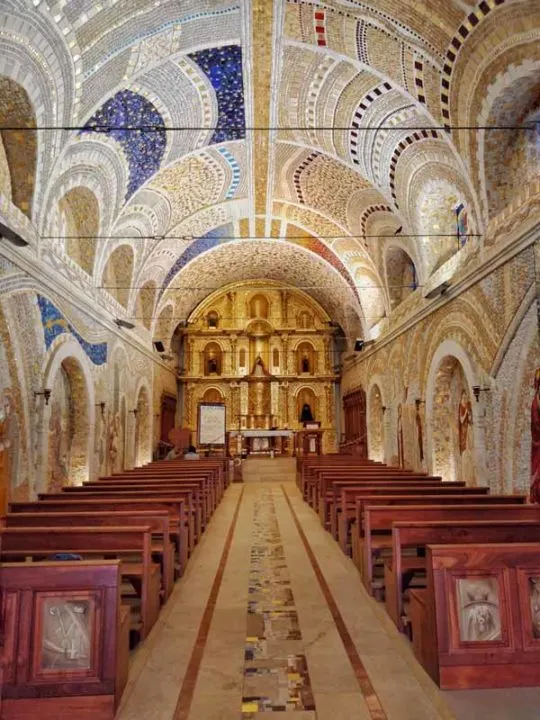
Designed in greens, blues, and golds, a vast mosaic depicting nativity scenes and other religious events decorates the church’s exterior walls, continuing inside for a dazzling spectacle.
Interestingly, these striking murals are evidence of over ten long years of work – all completed by the patient hands of the church (and adjoining school’s) students.
FAQs about visiting Peru
Which part of Peru should I visit?
Most visitors head to the south-east of Peru in order to head to the Sacred Valley and spend time at the archaeological wonder that is Machu Picchu, before potentially heading across to Lake Titicaca or down to Arequipa to explore the surrounding volcanic landscapes and Colca Canyon.
However, if you’re looking for a destination with far fewer tourists, consider visiting the north of Peru. This region is packed with archaeological sites, such as Kuélap, that receive far fewer visitors but are significantly older than Machu Picchu!
What is the prettiest place in Peru?
It’s hard to pick just one! Machu Picchu is definitely a dramatic sight to see, regardless of the season, while the surrounding Sacred Valley is particularly pretty and green during the months of April and May following the rainy season.
Another pretty place is the Pacific Coast, where white sand beaches in the resorts of Mancora and further north look out onto azure ocean.
What is the best place in Peru?
It really depends on what you want to do! If you’re into archaeological sites, then Machu Picchu and northern Peru (particularly around Trujillo, Chiclayo, and Chachapoyas) are the best places to visit. If you want to hike, the high mountains of the Cordillera Blanca that are accessible from Huaraz will be more up your street.
The Peruvian Amazon, particularly the Manu Biosphere Reserve close to Madre de Dios, is the best place in Peru for spying wildlife, including chatty monkeys, bizarre pink river dolphins, and even secretive jaguars.
What is Peru famous for?
Peru is most famous for Machu Picchu, a stone citadel located high in the mountains above the Sacred Valley that was built by the Inca. Peru is also famous for its cuisine; it’s considered to be home to some of the finest dishes in the world, including ceviche and even roast guinea pig.
Want more?
Get more inspiration with our guide for a two-week to two-month and get all the information you need for planning a trip to Peru with The Rough Guide to Peru, for which, Steph, the founder of Worldly Adventurer, was one of the contributors.
If you’re considering visiting Peru and want to escape the crowds or just want expert advice about the best destinations, hotels, and activities to do during your vacation, check out the Worldly Adventurer travel planning service for a custom-made itinerary tailored exactly to you and your upcoming trip.
You can also read our guide to when to visit Peru for information on the weather you can expect during different parts of the year and which month is best for planning your trip, as well as our guide to how much you can expect to spend exploring Peru.

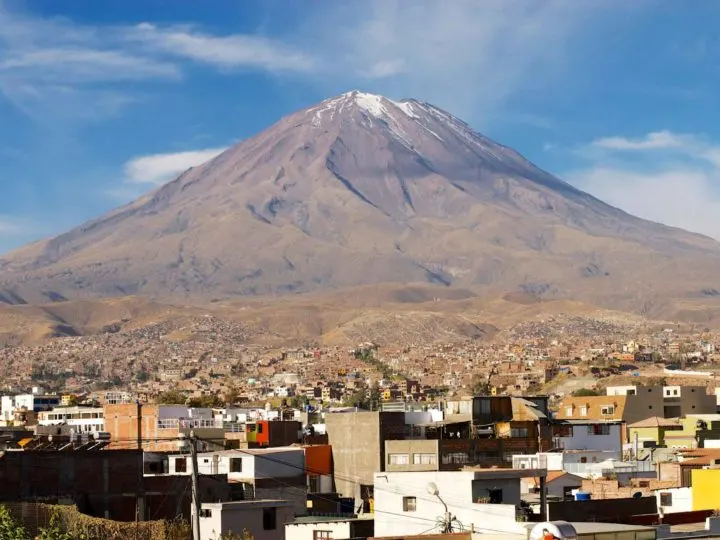
Anastasia
Tuesday 9th of July 2019
Wow! Very Good, informative article for anyone who wants to see more of Peru than the classic tourist route! Thank you! I've been backpacking Peru for a while, and literally loved the country! My favourite places are Huaraz region (and of course, Laguna 69) and the Rainbow Mountain hike!
Steph Dyson
Thursday 11th of July 2019
Glad you found the article helpful! Steph